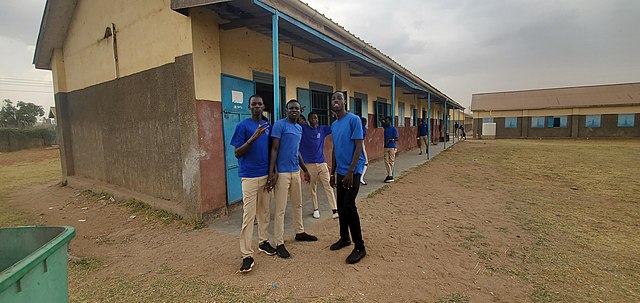
CBM Italy, Doctors With Africa CUAMM AND CORDAID Build South Sudan’s First Paediatric Eye Department
The new unit was created within the BEC, South Sudan’s first eye centre in Juba, which CBM started in 2015
The project as a whole plans to treat over 90,000 patients in three years.
Work has begun on the construction of the first paediatric eye department in South Sudan, a state in the centre-east of Africa that is among the poorest in the world
The Bright Sight – literally ‘bright sight’ – is the name of the cooperation project led by CBM Italy, in collaboration with the NGOs Doctors with Africa CUAMM and CORDAID, with the support of the AICS (Italian Agency for Development Cooperation) and the participation of the South Sudanese Ministry of Health.
Until now, the fate of South Sudanese children in need of eye care has been to be sent to distant hospitals in neighbouring states or to become permanently blind.
With the new project, aimed in particular at the most fragile groups of the population and people with disabilities, the plan is to construct the building – at the Buluk Eye Centre (BEC), the country’s first eye centre, which CBM started in 2015 in Juba -, purchase furniture and equipment, and also train medical staff and set up mobile eye clinics in three years.
The project’s objectives also include strengthening in the most vulnerable communities practices for the prevention of Neglected Tropical Diseases (infectious diseases that affect those living in poverty, such as trachoma and onchocerciasis), strengthening outreach health services with the widespread distribution of inclusive and accessible eye care services, treatment of complex diseases and rehabilitation activities.
South Sudan, the project aims to treat over 90,000 patients in three years
“Bringing quality care to improve the lives of thousands of people: this is why we are here today, because all of us together can make this dream a reality,” commented Massimo Maggio, director of CBM Italy.
“We started working in South Sudan 20 years ago, again in collaboration with the Ministry of Health, with the aim of strengthening eye care services in the country, and we have never stopped since.
In fact, we believe that eye health is a right for everyone, and especially for children: this new centre is dedicated to them, because they are the future”.
CBM was the first organisation to bring eye care to South Sudan
The first project dates back to 2003, dedicated to the treatment of onchocerciasis (a neglected disease also known as river blindness).
From 2008 to 2014, CBM started a specialist training programme for medical and health personnel in the country.
2015 marked the most important step: the opening of South Sudan’s first eye centre, the Buluk Eye Centre (BEC), which has since been helping to reduce avoidable blindness in Jubek State (one of the ten states that make up South Sudan and whose capital is Juba, also the central capital of the country) by providing functioning, quality eye care services, both at the BEC and in schools and displaced persons’ camps.
Projects united by a single vision: to offer eye health services that are integrated into the National Health System, inclusive (accessible to all, especially the most fragile) and comprehensive (with complete patient care: from prevention to treatment and rehabilitation).
The statement of Dr. Malek, Director General at the Ministry of National Health of the Republic of South Sudan, present at the opening ceremony: “The name Buluk Eye Centre resonates throughout the country.
With the expansion of the coverage of eye care services and the inclusion of new specialities, such as diabetic retinopathy and paediatric ophthalmology, we will no longer have to go to Uganda, Kenya, Sudan or other countries.
The South Sudanese population will be treated in their own country’.
Some figures describing extreme poverty in South Sudan
4 out of 5 people live below the poverty line; only 35% of the population has access to safe drinking water; 2.4 million children are excluded from basic education (source: Humanitarian Needs Overview 2021 “; UNOCHA and Humanitarian Country Team; January 2021).
The prevalence of visual impairment in South Sudan is high, yet 80 per cent of cases are preventable.
If left undiagnosed and untreated, the most severe diseases can lead to blindness, contributing to the vicious cycle linking poverty and disability.
The main causes of blindness are undiagnosed and untreated diseases such as cataracts and neglected tropical diseases such as trachoma and onchocerciasis.
Other diseases present are glaucoma, refractive errors, and childhood blindness.
Read Also
Saint Of The Day For 14 February: Saint Isaac Of Pecerska
Earthquake In Syria And Turkey, Pope Francis Prays For The Intercession Of The Virgin Mary
Earthquake In Syria And Turkey, Prayer And Church Commitment For 23 Million Human Beings
Pope Francis In Africa, Mass In Congo And The Proposal Of Christians: “Boboto”, Peace
Lula Brings New Environmental Hope To Catholics In Brazil, But Challenges Remain
